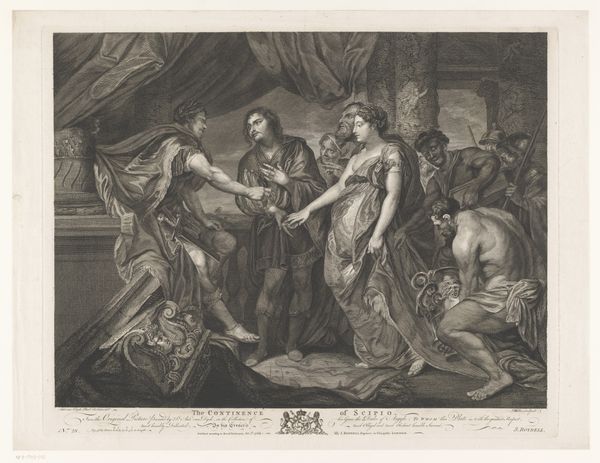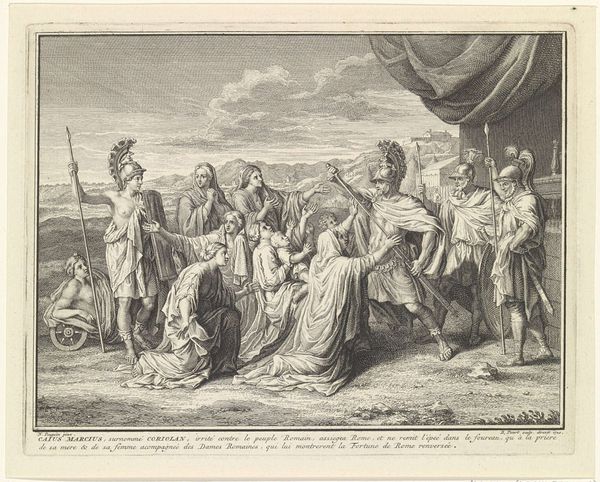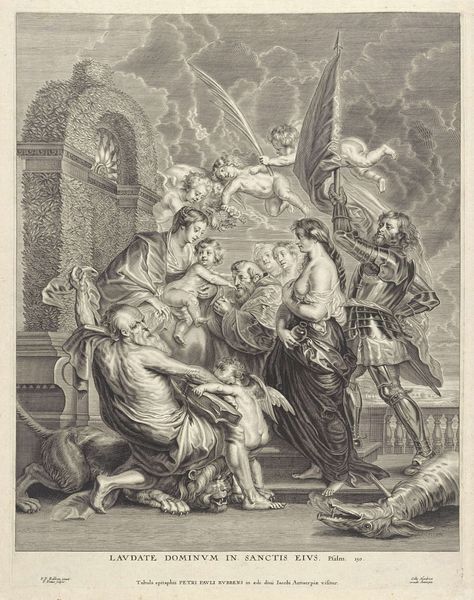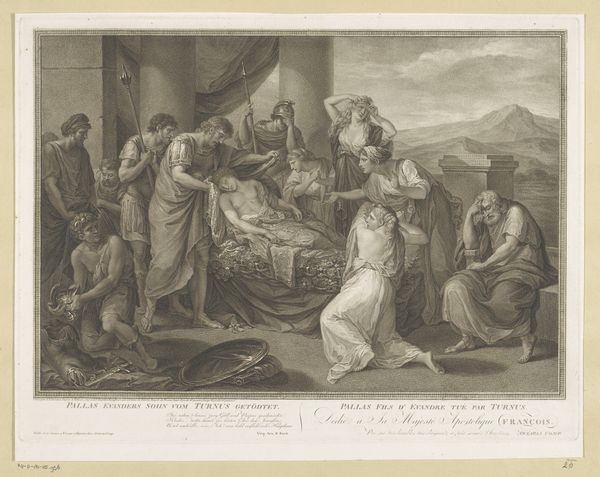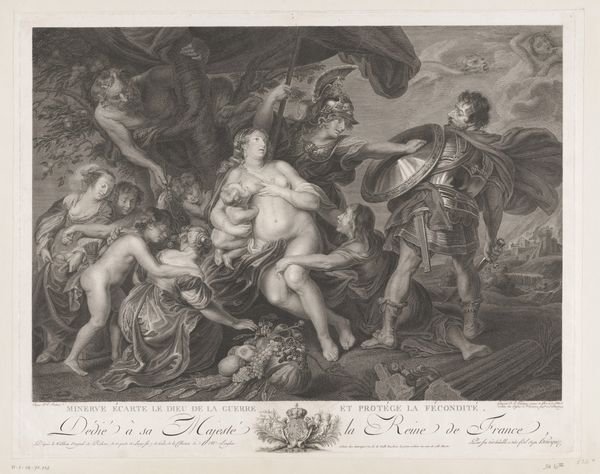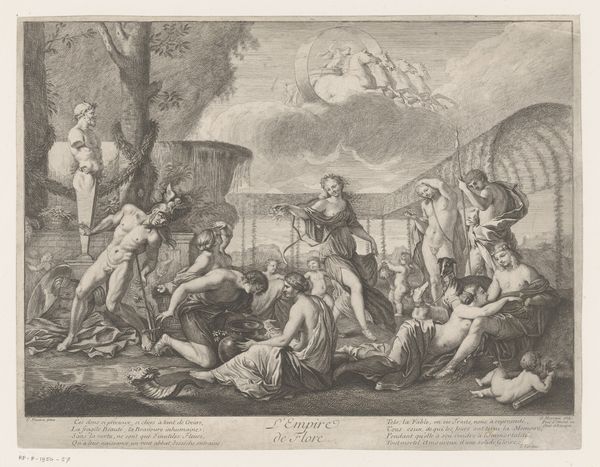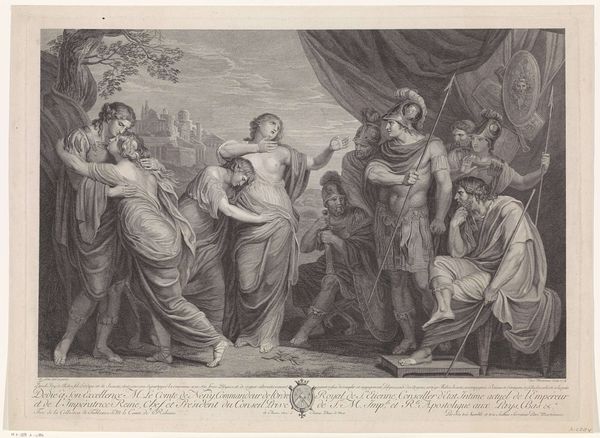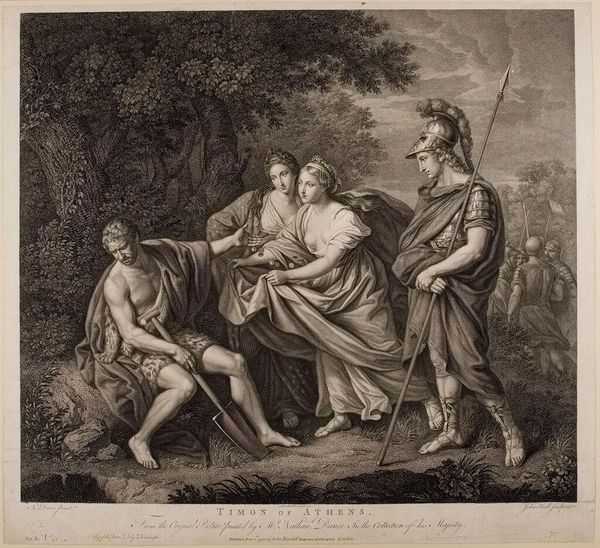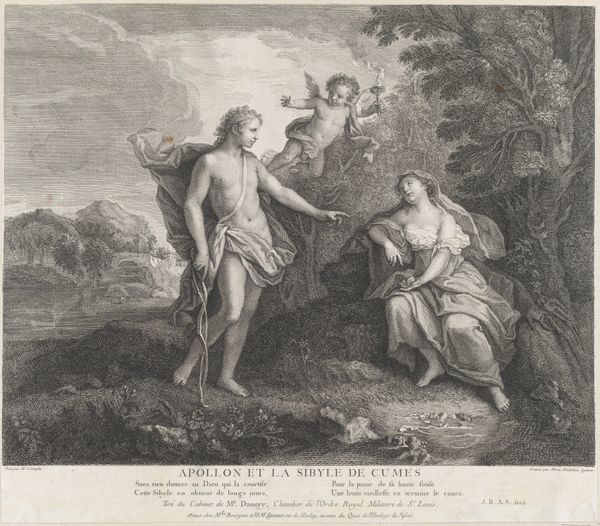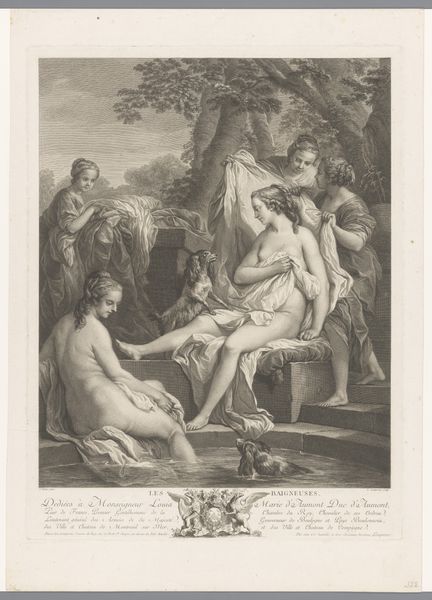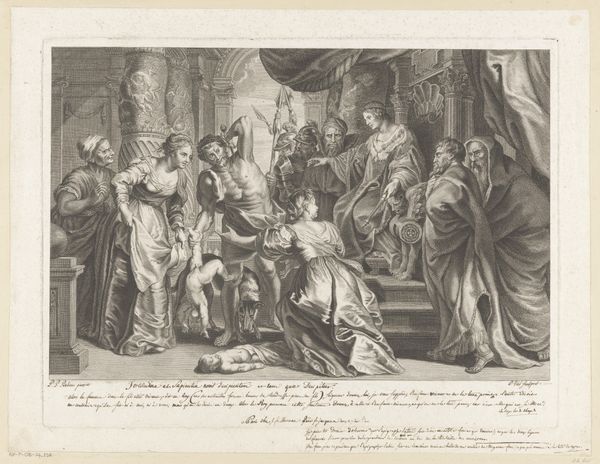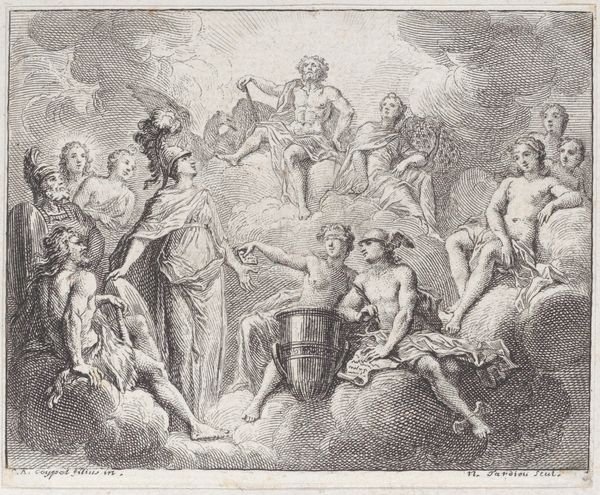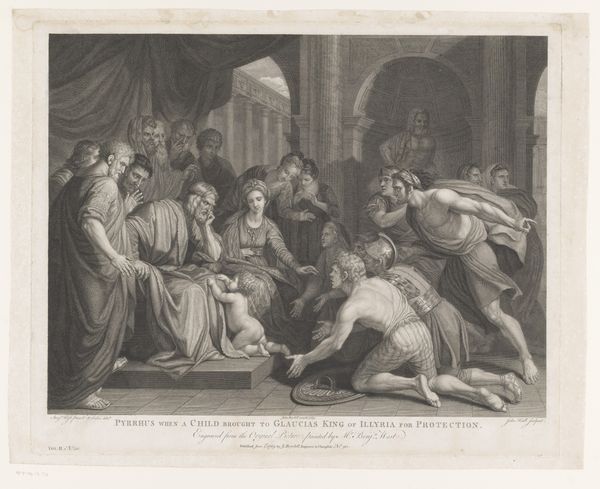
engraving
#
narrative-art
#
baroque
#
charcoal drawing
#
figuration
#
history-painting
#
nude
#
engraving
Dimensions: height 379 mm, width 454 mm
Copyright: Rijks Museum: Open Domain
Curator: Immediately, I'm struck by the overall coolness of this engraving. It's delicate, ethereal even, yet carries this profound weight. Editor: Indeed. What we're looking at is Louis Desplaces' "Orpheus and Eurydice," a piece that historians place between 1692 and 1739. It’s an engraving, so we see a range of gray tones created through fine lines, depicting the pivotal moment when Orpheus leads Eurydice from the Underworld. The print, like many, reproduces a painting by Peter Paul Rubens and would have circulated among collectors and connoisseurs. Curator: Ah yes, the weight of history in reproductive print! Even within those constraints, the artist offers a fascinating lens through which to analyze the patriarchal nature of the myth itself. Orpheus, the talented musician, leads a mostly-veiled Eurydice back to the land of the living, but she remains somewhat concealed, secondary. She isn’t allowed agency over the gaze that could free her or damn her. Editor: Precisely. Think about the function of the original painting within the social structure of the aristocracy. What did it mean to collect and display mythological scenes in private cabinets? The Orpheus myth became incredibly popular throughout the 17th and 18th centuries, and these images provided ways of thinking about, for example, marriage, fidelity, and the power of art. What's particularly fascinating in Desplaces' engraving is how he translated Rubens's characteristic sensuality. Curator: I see what you mean! Rubens' fleshy dynamism is adapted through light and shadow here, rendering Eurydice as less of an individual woman and more an allegorical object in negotiation. And look at Orpheus, even with the implied urgency of the moment, there’s something calm about him. That arm holding Eurydice appears rather relaxed, confident that his music will win the day, not even giving weight to her thoughts on the situation. It echoes a consistent power dynamic. Editor: This calm perhaps speaks to the nature of engravings. Because they required planning and methodical work, rather than spontaneous brushstrokes, engravers aimed for clarity and decorum, qualities admired within academic artistic circles at the time. Also, consider that this composition is deeply rooted in classical models and theatrical conventions – from the Underworld rulers on the left to Cerberus’s three heads at Orpheus' feet on the right! Curator: It's this combination of mythology, print technology, and established societal expectations, translated through Desplaces’ work, that gives us so much to consider in viewing. Thanks for the enlightening context! Editor: Likewise. Hopefully, that offers just a glimpse into this image, inviting us all to contemplate both its beauty and complexity within its socio-historical context.
Comments
No comments
Be the first to comment and join the conversation on the ultimate creative platform.
